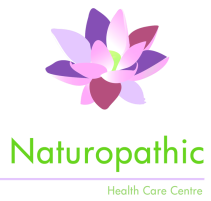|
By: Dr. Chantell Groenewald M. Tech Hom (UJ)
What is Endometriosis? Endometriosis is an oestrogen-mediated inflammatory disease that occurs when tissue that lines the inside of your uterus (endometrium) is found on other organs outside the uterus. The endometrial tissue can be limited to the pelvic cavity, most commonly involving the:
Less commonly it may involve the:
Endometrial tissue can spread beyond the pelvic organs including the lungs as well as the membranes covering the lungs and heart. This functioning extra-uterine endometrial patches responds cyclically to menstrual hormones, it thickens, breaks down and bleeds just like the endometrium lining the uterus often causing painful periods and infertility. The blood associated with the extra uterine endometrial tissue breaking down is trapped within the pelvic cavity causing:
What causes of Endometriosis? The generally accepted hypothesis for the cause of endometriosis is retrograde flow of menstrual tissue through the fallopian tubes which is then inserted in ectopic sites in the pelvis and less commonly outside the pelvic cavity. An estimated 90% of woman experience retrograde flow, hence why a genetic predisposition has been postulated for the survival and growth of this ectopic endometrial tissue. What are the diagnostic criteria for Endometriosis? Endometriosis is diagnosed in an estimated 25-50 % of women who suffer from infertility and 75-80% of woman who suffer from chronic pelvic pain. Endometriosis can only be diagnosed through a pelvic laparoscopy (surgically inserted viewing tube into the pelvic cavity) as well as a biopsy of suspected ectopic endometrial tissue. An estimated 1-7 % of women who are asymptomatic will be diagnosed with endometriosis during unrelated pelvic surgery. What are the signs and symptoms of Endometriosis? The main symptom of endometriosis is chronic pelvic pain which is often worse just before and during menses. Another leading symptom is infertility, with an estimated 20-50% of infertile women being affected. Symptoms may vary depending on where the ectopic tissue has implanted, this includes:
What are the natural treatment protocols for Endometriosis? To fully understand the treatment protocols that may assist in the symptomatic treatment of endometriosis, it is important to understand that ectopic endometrial tissue responds to normal cyclical menstrual hormones. Ectopic endometrial tissue however differs from the normal endometrium lining in that it exhibits variations in gene expressions that undergoes pathological changes which is partly responsible for the pain and structural changes associated with endometriosis. One such gene expression variation explains the oestrogen dominance observed in endometriosis. Keeping this is mind, let us take a closer look at some of the natural treatment protocols for endometriosis: 1. Losing weight Fat cells can act as endocrine glands and secrete oestrogen. Although these levels might not be very high it is still significant enough to raise blood levels of oestrogen, especially in obese woman. Weight loss will also assist in decreasing insulin resistance which is important for optimal ovarian function. A few tips on an effective diet program to combat endometriosis include:
2. Detox the liver and heal your gut The liver is responsible for metabolising oestrogen. If the liver is not functioning optimally, high levels of oestrogen will further exacerbate oestrogen dominance. There are various supplements including Chedlidonium, Taraxicum and Carduus Marianus, that may be beneficial in supporting liver function. After oestrogen has been metabolised by the liver, it is excreted via the gut. Leaky gut syndrome causes an up regulation of an enzyme called B-glucuronidase which breaks up bound oestrogen to be excreted and allows these smaller particles to be re-absorbed into the system. A gut cleanse diet is essential in the healthy functioning of our hormonal system. 3. Supplements & Herbal treatment Supplements that may be recommended by a qualified physician include:
4. Homeopathy There are several homeopathic remedies indicated for the treatment of endometriosis. The correct remedy is chosen based on each individual case. Studies suggest that a thorough case taking based on the symptom picture will lead to a similimum prescription to aid in the treatment of endometriosis. 5. Environmental factors Environmental factors include toxins that have a hormone like action on the body. These xenoestrogens are used in but not limited to food production, pesticides, food packaging production and cosmetics. Here are some tips to reduce exposure to xenoestrogens:
6. Exercise Exercise has a dual purpose, it helps to reduce excess cortisol and assists in weight loss. Both have hugely beneficial effects in reducing oestrogen dominance. Endometriosis can have little to no symptoms in some women while the disease can have debilitating effects in others. Infertility, subfertility and chronic pelvic pain being the leading symptoms of the disease. Studies have shown women who suffer from endometriosis are at a higher risk of developing cancer, specifically ovarian cancer. This is a disease that responds well to natural and alternative treatment. You are the first step to a healthier you. “Our food should be our medicine and our medicine should be our food.” Hippocrates
1 Comment
Leave a Reply. |
AuthorsDr. Marike de Klerk Categories
All
|
All rights reserved Naturopathic Health Care Centre
ADDRESS: No 13 Hazelwood Road, Hazelwood, Pretoria
TELEPHONE: 012 460 9216
PAIA Manua
Website design and digital marketing by Plan Me Pretty (PTY) Ltd
TELEPHONE: 012 460 9216
PAIA Manua
Website design and digital marketing by Plan Me Pretty (PTY) Ltd

 RSS Feed
RSS Feed